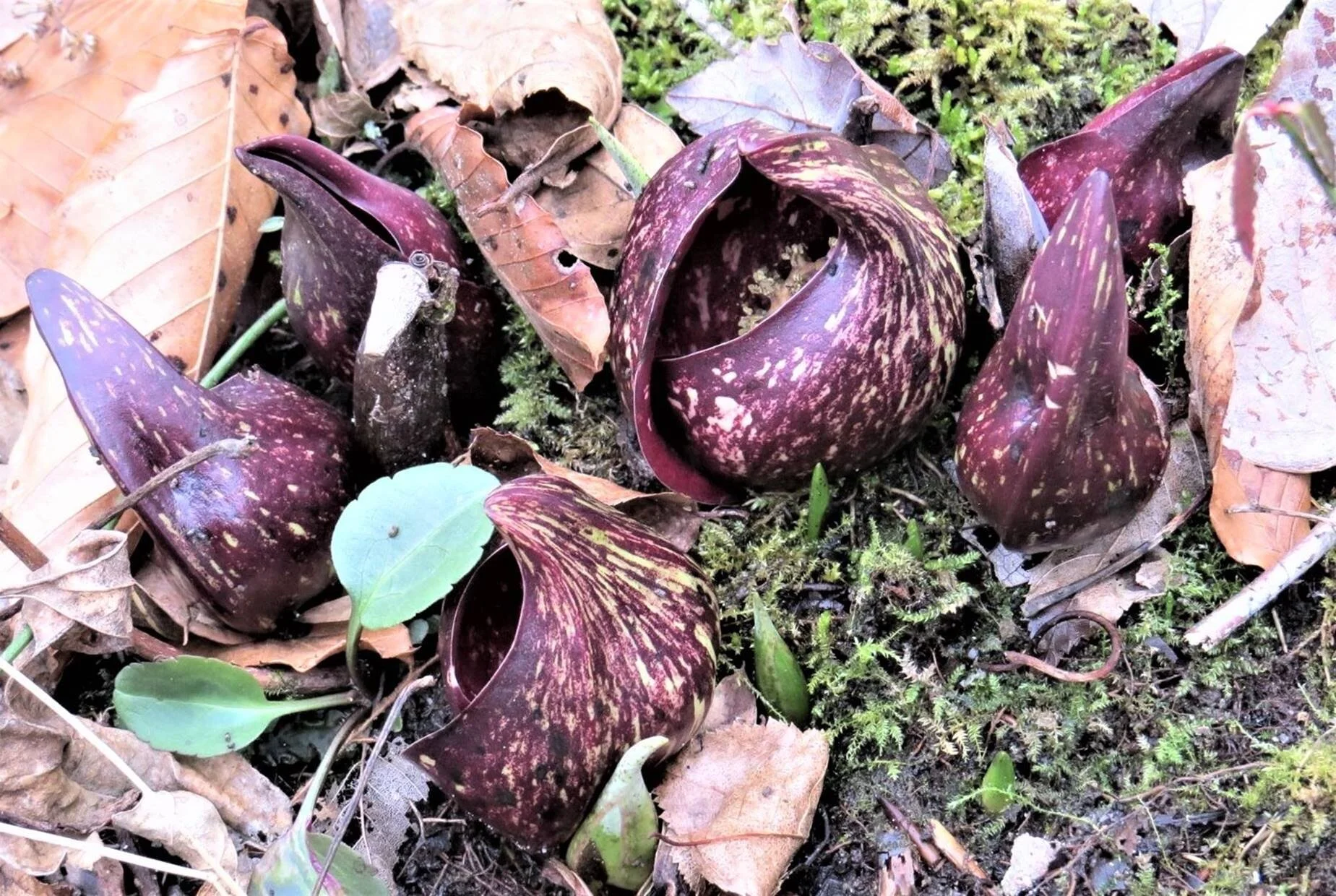For the past several years, the Northern Neck Chapters of the National Audubon Society (NNAS), Virginia Native Plant Society (NNNPS) and the Virginia Master Naturalists (NNMN) have sponsored a New Year’s Day walk at Hickory Hollow Natural Area Preserve in Lancaster County. The walk first began with members of the NN Chapter of the Virginia Native Plant Society but has greatly expanded and been cosponsored in recent years by the three aforementioned groups. The major goal has been to get people out early in the year and see Virginia’s earliest blooming plant, Skunk Cabbage. A walk in the woods at Hickory Hollow is a delightful way to welcome the New Year and what better place than in one of the four Natural Area Preserves in the Northern Neck. Little did anyone know that this year’s pandemic would make getting outside even more welcoming, but just not in a group.
For obvious reasons, the co-sponsors cannot conduct an open-to-the-public walk this coming New Year’s Day. So instead, the Audubon Board approved an virtual guided walk with pictures and a map that is easily viewed online here. The program was developed by Audubon Board Members, Betsy Washington and Kevin Howe and provides what you need for a visit to Hickory Hollow and the Skunk Cabbage – online and in person. The Board is planning more virtual programs for 2021 as our bird walks will continue to be delayed until sometime in the future.
Hickory Hollow, off Rt. 3 just south of Lancaster, is perfect for a walk in the woods anytime but especially during the first few weeks of January when Skunk Cabbage, is often in bloom at this time in the area known as Cabin Swamp. This plant is one of the very few plants that can produce its own heat enabling it to rise above the cold earth or even snow-covered ground.
The 254 acres at Hickory Hollow is one of the 65 Virginia Natural Area Preserves, all of which were created and protected, because they contain some of the rarest ecological communities and unique species habitats in North America. Hickory Hollow fits that definition well as it contains several rare plant communities including one of the very few globally rare natural communities known as a "coastal plain calcareous seepage swamp” which supports a high level of biological diversity. It contains some plants found nowhere else in Virginia but in our own Lancaster County.
Established in 2000, Hickory Hollow is owned by our Northern Neck Chapter of Audubon but managed by the Virginia Dept of Conservation and Recreation. The land of Hickory Hollow first appears historically in a deed description in 1780. In 1877, Lancaster County purchased the land to use as the Poor Farm for homeless and destitute members of the County. The Farm closed in 1905 and then used for timber with the last harvest around 1970. In the late 1990’s, the County considered the land as a potential site for an industrial park which would have destroyed the unique ecological treasure. Public opposition was strong and with support from members of the NNAS and the public, the County agreed to look elsewhere for a site. NNAS realized the site could only be protected in perpetuity though purchase and conservation easement protection. Partially through NNAS funds and partially with grant funds from the Virginia Land Conservation Fund, the land was purchased from the County. A contract with the Virginia Dept of Conservation and Recreation helps Audubon members manage the site with the goal of protection of the globally rare ecological community therein.
Virtual Hickory Hollow Skunk Cabbage Walk
